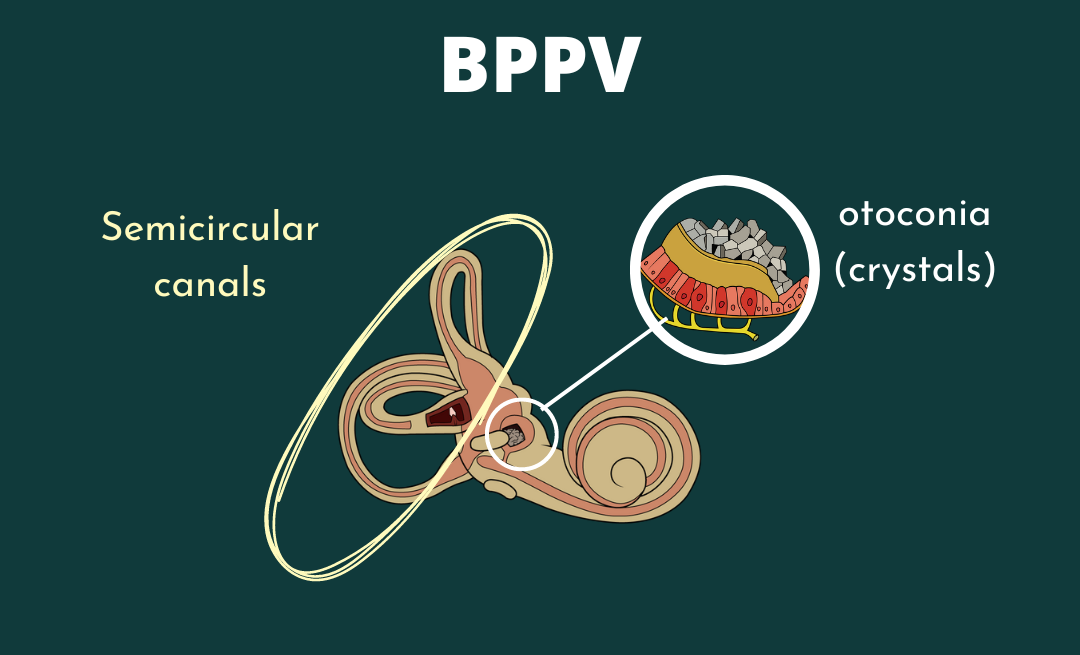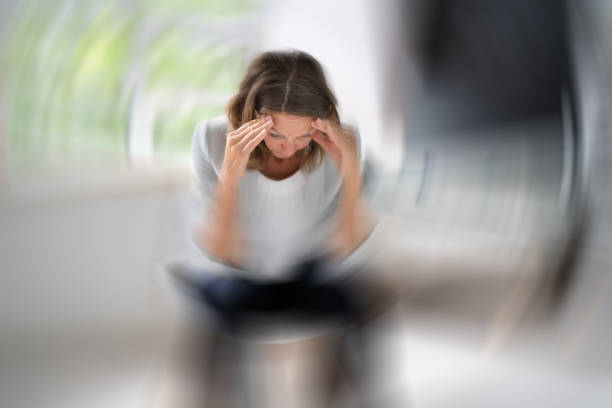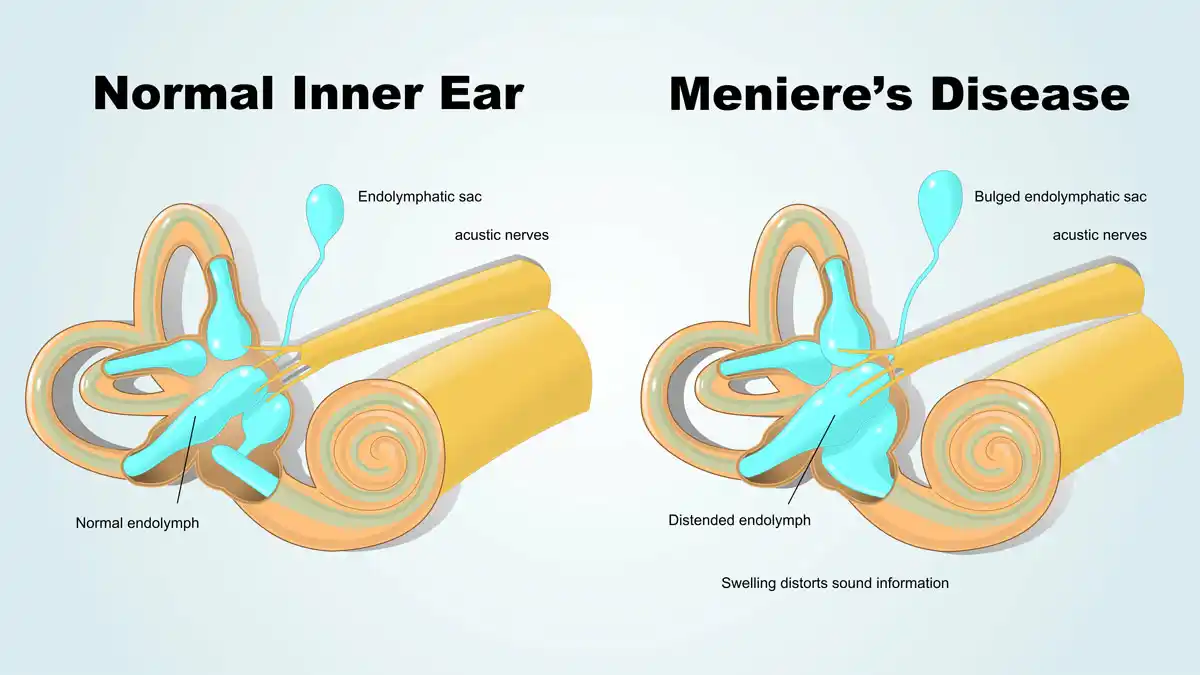Dizziness triggers: threshold theory and 10 contributors to dizziness
Many are on the hunt for dizziness triggers. “What is the one or two things that make my dizziness worse”. “If I just figured out my trigger I can get rid of it and not be dizzy anymore”. The many variables in day to day life, both within and outside our own control, makes this a futile effort. This leads to feeling overwhelmed, hopeless, frustrated, and depleted. This article will discuss a different approach known as threshold or bucket theory as well as considerations of what may contribute to one’s threshold. We’ll also cover ways to track this and create a bigger threshold for long term growth and management.
What is threshold (bucket) theory? Why is this better than finding specific dizziness triggers?
Finding specific dizziness triggers or the root cause to dizziness sounds great in theory but much harder in practice. Each day is different, making this hard to track. There might be areas that might contribute to dizziness but is outside anyone’s control (weather, infection, allergies) so then what?
Threshold or Bucket Theory helps account for the variability of life, things within our control and outside our control, and why it’s rarely just one thing. Think of a bucket, and dizziness triggers fill up the bucket. Different things may fill up the bucket more or less on different days. On better days we might have a bigger bucket, on less ideal days the bucket is smaller. When the bucket starts to reach full capacity or even starts to overflow, symptoms are heightened or even a full on attack.
Looking at what may contribute to ones bucket can help strategize and know what days may be more challenging and more support is needed, see what is within our own control to be modified, finding grace for things outside ones control, and working on growing a bigger bucket.

Contributors to threshold (or possible dizziness triggers depending on the day)
The picture above illustrates threshold theory and common “dizziness triggers” or contributors to ones threshold. This better shows how it’s rarely one thing that sets off a dizziness flare or attack and more likely a combination of factors, including a lower threshold/smaller bucket. Listed below are common contributors, and we’ll go into a bit more detail in the next section.
- Stress
- Poor Sleep
- Poor Hydration
- Hormones
- Weather Changes
- Illness/Sickness
- Dizzy Anxious Cycle
- Environment
- Seasonal Allergies
- Muscle tightness/Lack of MovementLet’s dive deeper into each of these topics below!
- Stress: High levels of stress can exacerbate vestibular symptoms by triggering physiological responses like the fight or flight response. Stress can tie into the dizzy anxious cycle but can be it’s own separate contributor as well. Chronic stress can lower ones threshold can lead to other health impacts such as poor sleep, muscle tension, headaches, high blood pressure and more.
2. Poor Sleep: Inadequate or poor-quality sleep can disrupt the body’s natural rhythms and impair cognitive function and processes that help with memory and learning. Learning is an area that’s important when healing and recovering from vestibular conditions as part of positive neuroplasticity. Learning and brain function help with reweighing of the sensory systems (why Vestibular therapy works!) Sleep deprivation can lower ones threshold by making it harder for the brain to carryout tasks. With a vestibular condition, the brain is working harder to determine spatial orientation and movements, and trying to determine the correct response. When functions require more resources, sleep is important to optimize function.
3. Poor Hydration: Dehydration can disrupt the balance of fluids and electrolytes in the body, affecting blood pressure and circulation. This may be important in certain populations such as those with POTs (Postural Orthostatic Tachycardia Syndrome). Being properly hydrated is again important to best support the body for healing and recovery.
4. Hormones: Fluctuations in hormone levels, such as those experienced during menstruation, pregnancy, or menopause, can influence vestibular function and trigger dizziness. There are some blog posts that go into more detail on the website. But there’s some amazing in depth information and discussions for Vestibular Group Fit Members.
5.Weather changes: Variations in barometric pressure, temperature, and humidity can contribute to ones threshold. Think of weather as a possible stressor to the body. Sudden changes in weather conditions may lower the threshold for dizziness and vertigo, especially for individuals with sensitivity to atmospheric pressure changes. The weatherx app and ear plugs can better assist tracking possible connections to barometric pressure shifts, and weather x ear plugs to assist in minimizing the impact of the weather.
6. Illness/Sickness: Viral infections, bacterial illnesses, and other health conditions can add stress to the body. As the body is fighting off an infection, energy and resources are being diverted to fight off an illness. Illness-related symptoms may lower the threshold for experiencing vestibular symptoms, particularly during periods of acute illness or recovery.
7. Dizzy-Anxious cycle: The relationship between dizziness and anxiety can create a vicious cycle where dizziness triggers anxiety, and anxiety exacerbates dizziness symptoms. This cycle can quickly fill ones threshold. This cycle can be broken, and why mindfulness and mindset work is so so important. Consider a professional to assist with tools and coping strategies. A whole section on medications, breathwork, and tools are in Vestibular Group Fit for members to explore.
8. Environment: Environmental factors such as noise, lighting, and visual stimuli can worsen dizziness. Certain environments, such as crowded or visually stimulating spaces, may lower ones threshold as well if visual vertigo or motion sensitivity is part of ones vestibular condition (hint: it is for many).
9. Seasonal allergies: Allergic reactions to pollen, dust, or other environmental allergens can exacerbate inflammation and congestion in the sinuses and even feel like plugged ears. Seasonal allergies may lower the threshold for experiencing dizziness and vertigo, especially during peak allergy seasons, everyone responds to allergies different, but springtime can be tough for vestibular warriors between weather shifts and pollen counts.
10. Muscle tightness/Lack of movement: Muscle tightness, especially in the might back, upper trap and neck region can impact migraine conditions and dizziness. Muscle tightness and resulting pain or a state of discomfort can make other symptoms worse as well. The body likes to move, and having tight, stiff, painful muscles or a fear of movement from dizziness and unsteadiness can become a vicious cycle.
How to track dizziness triggers or your threshold contributors
Using apps like Migraine Buddy or keeping a symptom journal can be valuable tools for tracking possible dizziness triggers in individuals with vestibular disorders. However, it’s important to approach symptom tracking mindfully to avoid hyperfocus, which can exacerbate symptoms and diminish quality of life. Rather than constantly monitoring, it’s recommended to track symptoms after noticing an increase or flare in dizziness.
Record information from the past 1-2 days, things like:
- hormonal fluctuations.
- stress levels
- weather
- allergies
- meals (skipped meals, different meal times, missed a bedtime snack, less nutrient dense meal etc)
- sleep
If experiencing increased symptoms or a flare, consider tracking symptoms leading up to the event, any medications taken, and strategies employed for relief. This can help identify patterns or prodromal signs preceding an attack and evaluate the effectiveness of medications or interventions. Remember, the goal is not to obsessively monitor every moment, but to gather insightful data that can inform targeted interventions and improve symptom management over time.
How to get a bigger threshold
Growing a larger threshold over time to better manage vestibular disorder symptoms involves a holistic approach that encompasses various aspects of health and well-being. Luckily, some of these are little to no cost, no doctors prescription needed. Building a bigger bucket does require consistent routine changes. Start small start slow. Build up a new routine one thing at a time, then add another. Check out a podcast on this here.
Just a reminder as well, certain factors like allergies, weather fluctuations, or illness may be beyond our control. Focusing on strategies within our control can help grow a larger threshold over time, allowing us to better absorb dizziness triggers we cannot control. There are some tools to try such as Weather X ear plugs before barometric pressure shift, allergy medication or natural nasal spray, measures to reduce risk of illness during cold and flu season. These may be good and useful tools to implement based on the situation.
Ways to grow a bigger bucket:
- Consistent, high-quality sleep is fundamental, as it supports overall health and resilience to stress.
- Regular movement, tailored to individual capabilities, promotes physical strength and balance, while staying adequately hydrated ensures optimal functioning of bodily systems.
- Engaging in mindset work and stress management techniques can help cultivate resilience and reduce the impact of stressors on symptoms.
- Environmental changes/workplace accomodations such as blue light glasses like avulux, blue light filters for computer use like iris tech, light covers for overhead fluorescent lighting, loop ear plugs etc.
- Seeking assistance from healthcare providers and building a supportive provider team can offer valuable guidance and resources for symptom management.

Living with a vestibular disorder requires patience, resilience, and a proactive approach to managing triggers and symptoms. By incorporating lifestyle modifications, stress management techniques, and awareness of your personal threshold, you can take control of your condition and improve your overall well-being. Remember, you’re not alone in this journey, and seeking support from healthcare professionals and fellow individuals living with vestibular disorders can provide valuable guidance and encouragement. Together, we can navigate the challenges of dizziness and find moments of stability and balance in our lives.
Disclaimer
Want to learn more about threshold contributors, tools to manage contributors, and other vestibular tools from the experts and be a part of a supportive community to get back to your daily life? Find out more at this link: https://tvd.flywheelstaging.com/about-group/
Disclaimer:
Remember: this post is for informational purposes only and may not be the best fit for you and your personal situation. It shall not be construed as medical advice. The information and education provided here is not intended or implied to supplement or replace professional medical treatment, advice, and/or diagnosis. Always check with your own physician or medical professional before trying or implementing any information read here.







